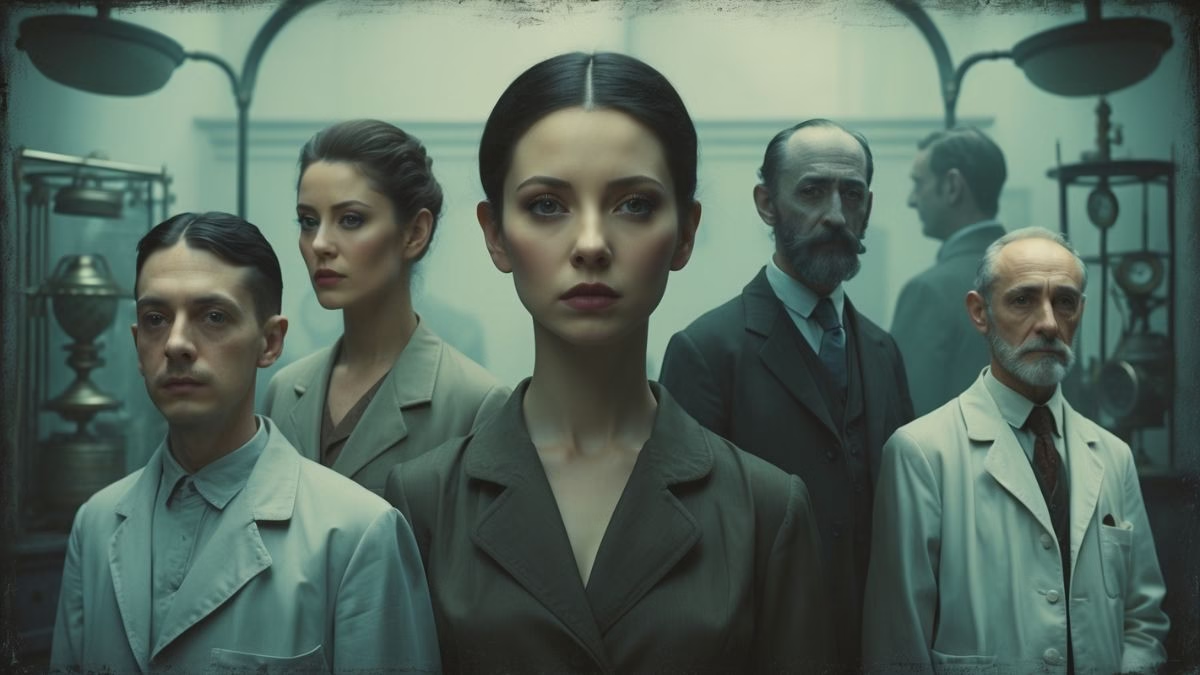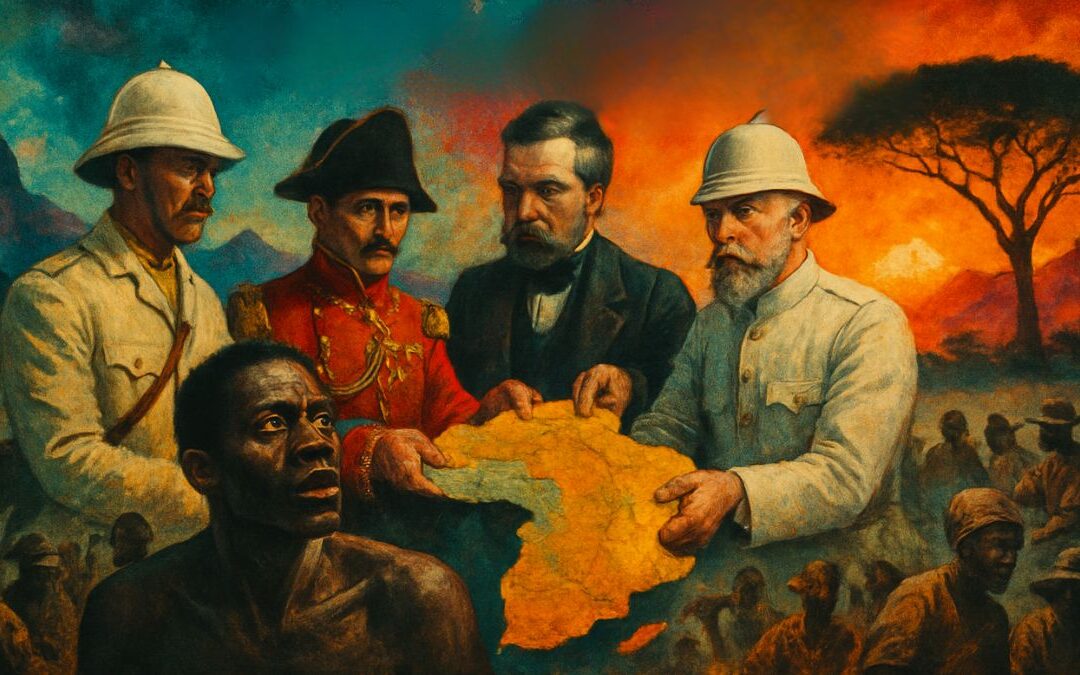Introduction
Hello and welcome back to English Plus. I’m your host, and this is our final episode in our special series, Mind Matters. We have traveled far and wide this week, exploring the biology, the lived experience, the categories, and the language of brain health. But to truly understand where we are now, we must understand where we have been. Today, we embark on one last journey—a journey through time.
I want you to picture two scenes.
In the first, it is 7,000 years ago. A person is lying on the ground, held down by their tribe, while a shaman, with a sharpened piece of flint, begins to scrape and chip a hole into their living skull. There is no anesthetic. There is only a desperate belief that this procedure will release the evil spirit that has caused their seizures or their profound melancholia.
Now, picture a second scene. It is today. A person lies still, but comfortable, inside the gleaming white tube of an fMRI machine. On a nearby screen, a scientist watches a three-dimensional image of their brain, glowing with color, revealing the intricate dance of blood flow and oxygen that corresponds to their every thought and feeling. The scientist is not looking for a demon; they are looking for patterns in neural circuits.
Between these two moments—the sharpened flint and the functional magnetic resonance image—lies one of the most dramatic, brutal, and ultimately hopeful stories in all of human history: the story of our quest to understand the brain and its disorders. The stigma we fight against today was not born overnight. It is an ancient heirloom, a shadow passed down through centuries of fear, superstition, and profound misunderstanding.
Today, we will trace the lineage of that shadow. We will ask:
- Why did our prehistoric ancestors believe that drilling a hole in the head was a viable medical treatment? What were they trying to let out, or perhaps, let in?
- How did a medical paradigm involving four bodily fluids—black bile, yellow bile, phlegm, and blood—and a mythical “wandering uterus” come to dominate Western thought on mental health for more than 1,500 years?
- What was the terrifying logic that, in a supposedly enlightened Renaissance, led society to equate mental illness with demonic possession and witchcraft, resulting in the persecution and death of thousands?
- How did the so-called “Age of Reason” give rise to both the first humane treatments for the mentally ill and the bizarre pseudoscience of phrenology, the practice of reading a person’s character from the bumps on their head?
- And in the 20th century, which revolution truly changed everything: Sigmund Freud’s invention of the “talking cure,” the accidental discovery of the first psychiatric medications, or the creation of a controversial diagnostic “bible” known as the DSM?
This episode is an epic, a human odyssey into our own minds. It is a chronicle of our species’ often-fumbling, sometimes horrifying, but always relentless attempt to solve the puzzle of ourselves. As with any grand history, what we present today is a survey, a flyover of a vast and deeply complex story. True understanding can only be found through much deeper reading and research. Consider this your invitation to begin that historical inquiry.
From demons to dopamine, from bedlam to brain scans, this is the story of how we understand the mind.
From Demons to Dopamine: A History of How We Understand the Brain
Chapter 1: The Ancient World – Echoes in the Skull
Our story begins in the deep, prehistoric past, with one of the most startling and visceral artifacts in all of medicine: the trepanned skull. Trepanning is the ancient practice of drilling, cutting, or scraping a hole into the skull of a living person. Archaeologists have found these skulls all over the world, from Europe to South America. And remarkably, many show signs of healing, meaning the person survived this brutal procedure.
Why on earth would they do this? The prevailing theory is that our earliest ancestors attributed mental distress—seizures, crippling headaches, what we might now call psychosis—to supernatural forces. A malevolent spirit or demon was trapped inside the head, and the only logical solution was to create an exit. It was the world’s first, and perhaps most literal, attempt at psychosurgery. It represents a foundational human intuition: the problem is in the head.
For thousands of years, this supernatural view held sway. But then, in ancient Greece, around the 4th century BCE, a physician named Hippocrates sparked a revolution. He is famous for the Hippocratic Oath, but his real contribution was to argue, forcefully, that all illnesses, including those of the mind, were not punishments from the gods, but were the result of natural causes. He moved the source of the problem from the heavens to the body.
He and his followers developed the theory of the Four Humors. The body was believed to contain four essential fluids: blood, phlegm, yellow bile, and black bile. A healthy person had these four humors in perfect balance. An imbalance, however, caused disease. Too much black bile, for example, was thought to produce melancholia, a state of profound sadness we would now call depression. The word itself comes from the Greek melas for “black” and kholē for “bile.”
The Greco-Romans also gave us another enduring and deeply problematic concept: hysteria. The word comes from the Greek hystera, meaning “uterus.” Physicians like Galen believed that a woman’s uterus was a free-floating organ that could wander around her body, causing all manner of symptoms—anxiety, shortness of breath, fainting, irritability. The prescribed “cure” was often marriage and pregnancy, to “anchor” the womb in place.
Now, scientifically, the Four Humors and the Wandering Womb are, of course, complete nonsense. But we cannot overstate how radical this shift was. For the first time, people were looking for the causes of brain disorders not in demons or gods, but in physiology. In the body. It was the dawn of a biological approach to brain health, an idea that would be lost, and then rediscovered, many centuries later.
Chapter 2: The Great Regression – Demons, Witches, and Bedlam
With the fall of the Roman Empire, much of that classical knowledge was lost to Western Europe. The pendulum of belief swung violently back from the natural to the supernatural. In the crucible of the Middle Ages and the Renaissance that followed, the dominant explanation for mental illness once again became demonic possession, divine punishment, or a profound moral and spiritual failing.
This belief system had devastating consequences. It created a climate of fear and suspicion, and the people who suffered most were those who were already on the margins of society, particularly women. This era saw the horrifying rise of the witch hunts. While the causes of this mass hysteria were complex, it is undeniable that many of the accused were individuals who likely had brain disorders. The elderly woman with dementia who spoke to herself, the person with schizophrenia who heard voices or had delusions, the individual with epilepsy who had seizures—their symptoms were not seen as medical, but as evidence of a pact with the devil. Books like the Malleus Maleficarum (“The Hammer of Witches”) were published, acting as diagnostic manuals for identifying these supposed agents of Satan.
As societies grew, the question of what to do with the “mad” became more pressing. And so, the first asylums were born. Perhaps the most infamous in history is the Bethlem Royal Hospital in London, founded in the 13th century. Its name, over time, was contracted and colloquially corrupted into a single, chilling word: Bedlam.
The word “bedlam” has entered the English language to mean a scene of uproar and confusion, and for good reason. The conditions in early Bedlam were horrific. Patients, seen not as sick but as subhuman, were often chained to walls, kept in filth, and subjected to treatments like beatings, starvation, and ice-cold baths. In one of its most ghoulish periods, Bedlam even became a tourist attraction. For a penny, wealthy Londoners could come and peer into the cells, laughing and jeering at the antics of the inmates as a form of popular entertainment. Bedlam represents the absolute nadir of stigma—the moment when human suffering was not only misunderstood but was actively monetized as a spectacle.
Chapter 3: An Age of Contradictions – Moral Treatment and Measuring Skulls
After the darkness of the Middle Ages, the 18th century brought the Age of Enlightenment, a new emphasis on reason, individual rights, and human dignity. And this new philosophy began to seep into the grim world of the asylum.
A French physician named Philippe Pinel became a hero of this new movement. In 1793, during the height of the French Revolution, he was put in charge of the Bicêtre asylum in Paris. Legend has it that he famously and dramatically ordered the chains to be struck from the patients, arguing that they were sick people who deserved kindness, not punishment. This was the dawn of what became known as “moral treatment.”
The idea was revolutionary: that a calm, orderly, and compassionate environment, combined with routine and meaningful activity, could restore the mind to health. In England, a Quaker named William Tuke founded “The Retreat” at York, a facility designed to be a quiet haven, not a prison. The core principle of moral treatment was that a person’s sanity was tied to their environment and their sense of self-worth. It was an astonishingly progressive and humane leap forward.
But this period, like so many, was full of contradictions. The very success of moral treatment led to a new problem in the 19th century. Believing that the right environment could cure mental illness, governments and philanthropists began building massive asylums, often in remote, rural locations. The original intent was noble—to provide a peaceful refuge. But as they grew, they became impossibly large, chronically underfunded, and hopelessly overcrowded. They transformed from places of treatment to human warehouses. The era of mass institutionalization began, and millions of people would spend their entire lives locked away from society.
And alongside these social developments, a bizarre and influential pseudoscience was born: phrenology. Popularized by a German physician named Franz Joseph Gall, phrenology was the belief that the brain was composed of different “organs,” each responsible for a personality trait—like courage, kindness, or criminality. The more developed an organ was, the larger it would be, creating a corresponding bump on the skull. A phrenologist would “read” a person’s character and mental faculties by carefully measuring and feeling the lumps on their head.
Of course, we now know phrenology is complete bunk. You cannot tell if someone is a poet by feeling their forehead. But, in a strange way, phrenology was accidentally important. It popularized a critical idea that would later be proven true: the concept of localization of function. The idea that specific mental processes happen in specific parts of the brain is a cornerstone of modern neuroscience. Phrenology was a profoundly wrong method that stumbled toward a profoundly correct conclusion.
Chapter 4: The Century of the Brain – The Couch, The Pill, and The Book
The 20th century was an explosion of new ideas, and it completely reshaped our understanding of the mind. Three major revolutions—the couch, the pill, and the book—would define the modern era.
First, the couch. In Vienna, a neurologist named Sigmund Freud developed a radical new theory and a new form of treatment: psychoanalysis. Freud argued that much of our behavior is driven by a powerful unconscious mind, filled with repressed memories, hidden desires, and unresolved childhood conflicts. Psychological symptoms—anxiety, phobias, obsessions—were not random, but were the symbolic language of this inner turmoil. His treatment was the “talking cure.” For the first time, a patient would lie on a couch and simply talk, using techniques like free association and dream analysis to excavate these buried truths.
Freud’s theories are, today, highly debated and largely unfalsifiable. But his influence is impossible to ignore. He gave us the first systematic psychological therapy and introduced the world to the idea that our inner lives, our histories, and our stories matter profoundly to our mental health.
While Freud was looking at the mind, others were focused squarely on the brain. The first half of the 20th century saw the rise of brutal physical interventions. Treatments like insulin coma therapy and electroconvulsive therapy (ECT) were developed. And most infamously, the lobotomy, a surgical procedure that involved severing connections in the brain’s prefrontal lobe, became tragically common.
But in the 1950s, a true revolution happened, largely by accident. Scientists developing antihistamines noticed that one of their drugs, chlorpromazine, had a powerful calming effect on agitated patients. It was marketed as Thorazine, and it became the first effective antipsychotic medication. It couldn’t cure schizophrenia, but it could reduce the intensity of hallucinations and delusions, allowing many people to leave institutions for the first time. Shortly after, the first antidepressants were also discovered. This was the dawn of the psychopharmacological revolution. The success of these medications provided the first concrete, widespread proof that you could change the mind by changing the chemistry of the brain. The journey from demons to dopamine was well and truly underway.
With the rise of both psychological and biological treatments, the field of psychiatry faced a problem: a lack of a common language. A psychiatrist in New York might diagnose a patient with one condition, while a psychiatrist in California, seeing the same symptoms, might use a completely different label. To solve this, the American Psychiatric Association published the Diagnostic and Statistical Manual of Mental Disorders (DSM) in 1952.
The DSM was, and is, essentially a field guide to mental disorders. It provides checklists of symptoms and criteria to help clinicians make a diagnosis. It has been incredibly influential, allowing for standardized research and communication. It has also been incredibly controversial, with critics arguing that it turns complex human suffering into a set of simplistic labels and that its definitions are subject to cultural and financial pressures. But love it or hate it, the DSM became the definitive “book” that organized the entire field for the latter half of the 20th century.
Chapter 5: The Modern Era – Seeing the Living Brain in Action
The final chapter of our story brings us to the present day, beginning with a major push in the 1990s, which was officially designated the “Decade of the Brain” in the United States. This initiative poured funding and public attention into neuroscience research, and it coincided with a technological leap that changed everything: neuroimaging.
For the first time in human history, we could watch a living brain as it thought, felt, and perceived the world. Technologies like Positron Emission Tomography (PET) scans and, more famously, functional Magnetic Resonance Imaging (fMRI) allowed scientists to see which parts of the brain were active during specific tasks. They could see the amygdala light up with activity during a panic attack. They could see reduced activity in the prefrontal cortex in a person with depression.
This was the final nail in the coffin of mind-body dualism. The biological basis of brain disorders was no longer a theory; it was a visible, measurable reality. We could literally see the brain functioning differently.
This brings us to our modern understanding, which is best described by the bio-psycho-social model. This model recognizes that brain disorders are not caused by one single thing. They are the complex result of an ongoing interaction between:
- Bio: Our biology—our genes, our brain structure, our neurotransmitter levels.
- Psycho: Our psychology—our thought patterns, our coping skills, our history of trauma.
- Social: Our social environment—our relationships, our culture, poverty, discrimination, and the presence or absence of stigma.
Conclusion: Exorcising the Ghosts of the Past
We have traveled a very long way, from a sharpened flint drilling into a skull to release a demon, to an fMRI scanner mapping the delicate circuits of the mind. Our history has been filled with brilliant insights and horrifying cruelties. We have seen moments of profound compassion and periods of unspeakable stigma.
The story of brain disorders is the story of humanity itself—our fear of the unknown, our capacity for both cruelty and kindness, and our relentless, unyielding curiosity. The stigma that we are all working so hard to dismantle today is the modern ghost of Bedlam. It is the echo of the witch-hunter’s accusation. It is the shadow of the asylum wall.
By understanding this history, by seeing how these old, fearful ideas were forged, we gain the power to finally break them. We can see stigma not as some immutable fact of life, but as a relic of a more ignorant time. By embracing the complex, scientific, and compassionate bio-psycho-social model of today, we are not just treating disorders; we are exorcising the demons of our own past.
Thank you for taking this journey with me.










0 Comments